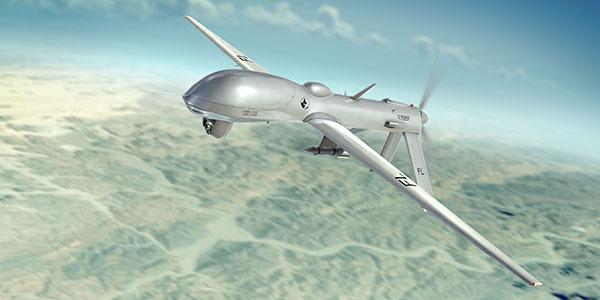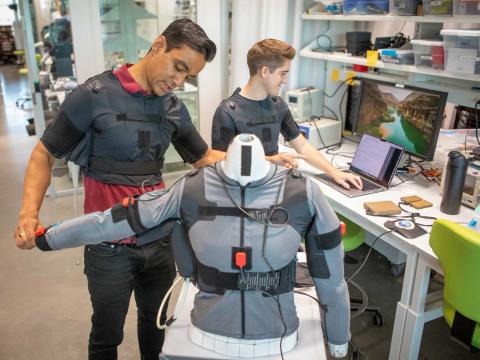ODNI Official Touts Three IARPA Programs
The U.S. intelligence community is embracing a number of emerging technologies, including artificial intelligence, biotechnologies, advanced materials and advanced communication systems, officials from the Office of the Director of Intelligence (ODNI) told the audience at AFCEA’s virtual Spring Intelligence Symposium, held May 25-27.
During a morning keynote presentation on the second day of the event, Dustin Gard-Weiss, deputy director of national intelligence for policy and capabilities, ODNI, highlighted three areas of research being conducted at the Intelligence Advanced Research Projects Activity (IARPA), the research and development agency for the intelligence community (IC).
Those areas of research include “algorithms capable of performing whole-body biometric identification,” “developing a new storage paradigm that encodes data using sequence-controlled polymers as a storage medium with a goal of scaling this into the exabyte regime and beyond” and “finding speech and text content in low-resource languages that is relative to English queries.”
While Gard-Weiss didn’t name specific programs, he apparently was referencing IARPA’s Biometric Recognition and Identification at Altitude and Range (BRIAR), Molecular Information Storage (MIST) and Machine Translation (MATERIAL) programs.
Dustin Gard-Weiss, Deputy Director of National Intelligence for Policy and Capabilities, @ODNIgov, says we usually think of industry supporting the intel community, but "We need to support industry in some different ways."
— George Seffers (pronounced See furs) (@gseffers) May 26, 2021
The IARPA website describes the BRIAR program as aiming to develop software algorithm-based systems capable of performing whole-body biometric identification at long-range and from elevated platforms. Many intelligence community and Defense Department agencies require the ability to identify or recognize individuals under challenging scenarios, such as at ranges longer than 300 meters, through atmospheric turbulence, or from elevated and/or aerial sensor platforms such as watch towers or unmanned aerial vehicles. “Expanding the range of conditions in which accurate and reliable biometric-based identification could be performed would greatly improve the number of addressable missions, types of platforms and sensors from which biometrics can be reliably used, and quality of outcomes and decisions,” explains an IARPA broad agency announcement.
“The goal of the MIST program is to develop deployable storage technologies that can eventually scale into the exabyte regime and beyond with reduced physical footprint, power and cost requirements relative to conventional storage technologies. MIST seeks to accomplish this by using sequence-controlled polymers as a data storage medium, and by building the necessary devices and information systems to interface with this medium,” according to an IARPA broad agency announcement on the program.
“And oh, by the way, it does so with a reduced footprint, reduced power and reduced cost requirements relative to conventional storage approaches,” Gard-Weiss noted.
Lastly, the MATERIAL program focuses on machine translation of more obscure languages, such as Kurdish, Swahili and Tagalog, which is spoken by the Tagalog people in the Philippine Islands. These and many other languages are not covered by popular language translation programs.
“This technology that they’re developing in this research has outperformed Google Translate,” Gard-Weiss asserted.
“Emerging and disruptive technologies will continue to influence and impact everyday life in America. Our job is to embrace the ongoing technological revolution and harness it as a strategic advantage and not a threat,” he said. “As such, the IC is partnering with government, industry and academic partners to address emerging technologies that have direct applications to our mission. This includes areas such as artificial intelligence, communication technologies, biotech and materiel sciences among others.”
John Lombardi, Associate Dpty Director of Nt'l Intel for Mission Integration Office, @ODNIgov: Stressing the need for international partnerships, "Our allies have always had better insights into some of the problems, particularly regional problems, than we did." #AFCEAIntel
— George Seffers (pronounced See furs) (@gseffers) May 26, 2021
Gard-Weiss shared the morning keynote platform with John Lombardi, associate deputy director of national intelligence for Mission Integration, ODNI. Lombardi noted the importance of innovation. “The litany of challenges facing our nation compels us to expand what we define as national security, thinking about the challenges brought by our adversaries and our environment. Responding to these challenges demands we operate differently as a community,” Lombardi said. “Through the strength of our innovation, we will up our game across the board. Through the strength of our partnerships we will protect the nation and better take the fight back to our adversaries.”





Comments